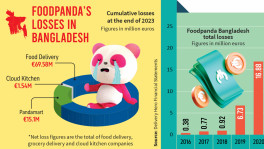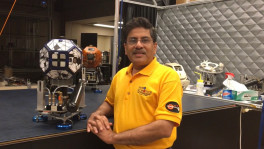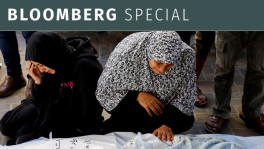Covid-19 vaccine: The gap between expectations and reality
All regulatory criteria have to be met before a vaccine is finally ready for people. There is no shortcut to delivering a vaccine for mass vaccination. It is not even possible in an emergency like Covid-19

A vaccine is a pharmaceutical product of biological formulation that is used to acquire immunity against a particular infectious disease-causing agent such as bacteria or virus. The term vaccine originated from Variolaevaccinae (smallpox of the cow).
British physician Edward Jenner invented the science of vaccine and described the protective effect of cowpox against smallpox in 1798. The science of vaccines emerged as a discipline through the monumental works of another icon of biological science, Louis Pasteur, almost a century later.
Pasteur proved the concept that a weakened or attenuated form of a pathogen can induce immunity, which can give protection from natural infection. Till today, Pasteur's concept of attenuation or inactivation has been used for developing many successful vaccines against pathogens of human and animals.
A vaccine contains a disease-causing agent of a pathogen, that could be the attenuated or killed form of the pathogen itself, its toxins, or there could be one of its surface proteins or nucleic acids. Upon vaccination, our immune system recognises the agent as a threat and thereby prepares its arsenal of antibody to encounter any potential future threat.
Nowadays, vaccines can be divided into two distinct groups. One is prophylactic that encompasses vaccines used to prevent disease, and another is therapeutic, which is used against a disease that has already affected the body, such as cancer. The prophylactic vaccines are used against several infectious diseases.
Cutting edge technology has enabled the human race to use recombinant DNA technology to develop engineered vaccines using a protein of a pathogen that can be delivered by a different harmless vector. Other potential vaccine development technologies involve nucleic acids such as RNA or DNA of pathogen.
Technology can make a candidate vaccine easily, but the success of a vaccine depends on some factors such as the nature of the disease, strain of the causative pathogen, the capability of a pathogen to mutate, ethnicity, nutritional status etc.
We have to remember that while other pharmaceutical products are aimed at ailing patients, the prophylactic vaccines are made to be applied to healthy individuals. Therefore, the matter of safety and risks, apart from its efficacy, is also paramount.

The challenge of the Covid-19 pandemic has triggered an unprecedented urge to get a vaccine as soon as possible. But this expectation does not match the reality of vaccine development and regulatory processes, although, we have more than 20 vaccines against life-threatening diseases that save millions of lives globally.
But do we know how many years of concerted efforts are required to develop a vaccine for mass vaccination? Have we ever looked at the timeline of developing some successful vaccines? Is it possible to overcome the regulatory hurdles faster than ever?
While the development of a vaccine takes 10 to 15 years of effort, we are expecting to get a vaccine of Covid-19 within six months to one year. To understand the reality of getting a vaccine in six months we must go through the process of vaccine development.
Vaccine development involves an exploratory stage, preclinical stage, clinical development, regulatory review approval, manufacturing and quality control. Advanced technologies expedited the process of the exploratory stage. Therefore, a candidate vaccine can be developed quickly.
However, in later stages, the process is rigorous and involves trials and this is the reason why vaccine development is the most sophisticated biological development procedure, involving a huge investment of money and time. It requires expertise too.
Preclinical studies of a vaccine are performed before clinical studies, hence termed as nonclinical trial. These studies are carried out to evaluate the safety, immunogenicity and therapeutic performance of vaccines in suitable animal models. Therefore, these studies start with choosing the right animal model.
For example, the emergence of Covid-19 has created a demand for laboratory animals that have human versions of a protein called the ACE2 receptor. This molecule is the hook that SARS-COV-2, the virus which causes Covid-19, uses to attach itself to a cell before entering and turning that cell into a manufacturing factory of itself.
The murine (mice) version of ACE2 is the wrong shape for the virus to link up with. That means unmodified mice cannot catch the infection in a way that mimics human infection. It necessitated the genetic engineering of laboratory mice. The first version of such a mouse has recently been made available by the Jackson Laboratory, USA.
In the case of nonhuman primates, SARS-CoV in the past was seen to infect rhesus macaques, cynomolgus macaques and African green monkeys (AGMs), while clinical signs, viral replication and pathology depended upon the species.
In the case of two most advanced vaccines against Covid-19 (ChAdOx1 from Oxford University, UK and mRNA-1273, NIH & Moderna, USA), the prototype vaccines protected against SARS-CoV-2 infection in rhesus macaques. Therefore, rhesus macaques have been used as a nonhuman primate animal model by researchers for preclinical trials of SAR-CoV-2 vaccines.
Before the vaccine trial, one needs to submit a list of preclinical toxicity and immunogenicity studies to be conducted, including protocol, guidelines, and standards to be followed. They need to provide selection criteria for animals selected and numbers to be used in each group, and also justification for the selection of animal model/numbers.
They need to provide pre-clinical toxicity and immunogenicity (sequence-specific, non-specific to other proteins and with adjuvant, as applicable) study protocols. Protocols should include the route of administration, dosage to be tested (based on effective dose), basis of dose calculation, vehicle, and mode of administration, the volume of administration (single or multiple administrations).
At the same time, details of the accreditation status of the facility where studies are to be conducted and compliance of containment facility measures also needed to be submitted.
The application for a clinical trial will be approved based on a NOC from the regulatory authority after examination of data from pre-clinical studies.
Clinical trials in humans are divided into three phases. At first, in clinical studies, initial testing of a vaccine is carried out to test the properties of a vaccine, tolerability, and, if appropriate, clinical laboratory and pharmacological parameters in small numbers (20-100) of healthy adults.
In the second phase, studies are primarily concerned with safety - that the vaccine does not harm healthy individuals. In phase three, studies involve larger numbers of subjects (100-300) and are intended to obtain preliminary information about a vaccine's ability to produce its desired effect or immunogenicity (the ability of a vaccine to protect from the corresponding pathogen) in the target population.
By and large, in phase two, scientists observe the ability of a vaccine to mount an immune response that is characterised by the generation of a neutralising antibody against the target pathogen. Non-specific immunity or cross-reactivity (affecting normal body function) and general safety are also concerns of this phase.
The studies of phase three are required to fully assess protective efficacy and safety of a vaccine for a long time and carried out on a larger population than phase two (300-3000). Candidate vaccines for clinical trials should be prepared under conditions of Good Manufacturing Practices (GMPs).
The general manufacturing recommendations contained in Good Manufacturing Practices for Pharmaceutical and Biological Products should be applied to all establishments involved in producing a candidate vaccine for clinical studies.
Standard Operating Procedures (SOPs) covering all aspects of production, quality control, storage and distribution should be properly documented. Vaccines used in clinical trials have to be derived from well-established vaccine manufacturers following the above-mentioned guidelines.
It is imperative to mention that in phase three trials vaccines are observed for at least 12 months to assess the efficacy of a vaccine, or it could be even longer. However, it is believed that in the case of Covid-19 this observation will be shortened to expedite its delivery by regulatory authorities like FDA and MHRA.
Nonetheless, all regulatory criteria have to be met before a vaccine is finally ready for people. Therefore, there is no shortcut to delivering a vaccine for mass vaccination. It is not even possible in an emergency like Covid-19. Without proper assessment, bringing a vaccine might not be useful in the long run, while the safety and efficacy will be a concern.
If we look at the Covid-19 vaccine development landscape, 18 candidate vaccines are in a clinical trial and have been administered to humans and 129 more are in preclinical stages of development. We can at least hope that a few of them will be successful. Nevertheless, the ultimate success of a vaccine will depend on its ability to generate a sustainable immune response.
A recent study has shown that protective IgG antibody against SARS-CoV-2 does not exist for more than eight weeks. Inevitably, the question arises whether a vaccine will be able to generate a neutralising antibody that exists for a longer time. Vaccination strategy stands on science, not on our emotion or urges to get it fast.
Unless a vaccine gives us protection for one year or more, there will be logically no point of taking the vaccine. We have to remember that we can only expedite the vaccine development process, but neither can our body's immune response be expedited to produce neutralising antibody nor can we engineer ourselves to keep antibody longer than usual.
Without proper scientific assessment a vaccine will not appear in the market, irrespective of time. This is the reality and until then we have to live with Covid-19, complying with health and safety guidelines.
*Dr Munia Amin, is the head of Biotech R&D, Healthcare Pharmaceuticals Ltd., Bangladesh and Dr Muhammad Sougatul Islam is the director, BioTED, Bangladesh and ex-research investigator, Centre for Vaccine Sciences (CVS), iccdr'b


 Keep updated, follow The Business Standard's Google news channel
Keep updated, follow The Business Standard's Google news channel
















